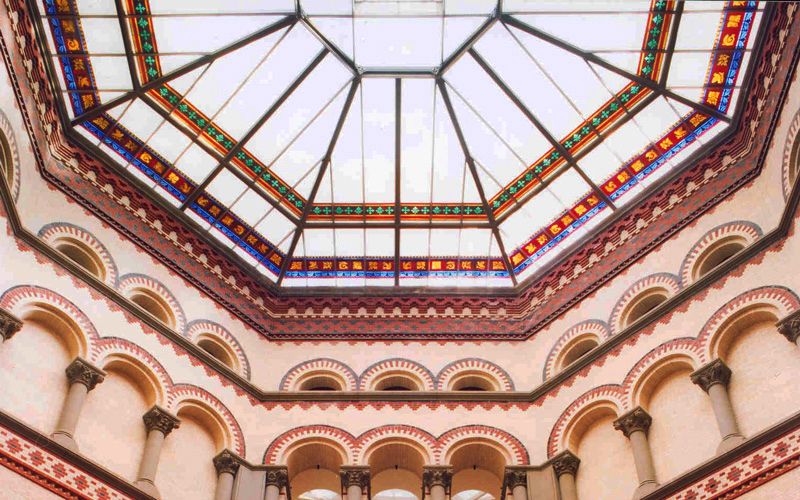
 Public Design Commission311
Public Design Commission311 Search all NYC.gov websites
Search all NYC.gov websites
Tweed Courthouse

The Old New York County Courthouse, better known as Tweed Courthouse, is one of New York's most architecturally impressive civic monuments. Built between 1861 and 1881, it is the product of two of New York's most prominent 19th-century architects – John Kellum and Leopold Eidlitz – and two of the most disparate 19th-century architectural movements – mid-century commercial Italianate and Victorian medievalism. Tweed Courthouse is a designated New York City landmark with sections of the interior designated landmarks as well. The building has retained its original spatial arrangement, encompassing 30 monumental courtrooms and a central rotunda. The immense cast-iron structural and decorative elements are unparalleled in any American public building.
In December 1861, John Kellum won the commission to build the "New County Courthouse." He designed a rusticated basement, monumental Corinthian portico, and a dome, which was never built. On the interior, Kellum created Italianate courtrooms and offices as well as the first two floors of the rotunda. Kellum died in 1871, before the project was completed, and Leopold Eidlitz was commissioned by the City in 1874 to finish the interior and design a new south wing. Rather than following Kellum's neoclassical style, Eidlitz incorporated elements of Romanesque architecture, including polychromed brick and richly carved stonework on the interior, as well as a spectacular laylight over the octagonal rotunda – one of the most impressive public spaces in New York City.
Tweed Courthouse is the legacy of Tammany Hall boss William M. Tweed, who used the construction of the building to embezzle large sums from the budget. The building is estimated to have cost between $11 million and $15 million to complete, which was sixty times the original estimate of $250,000; $9 million of that cost was thought to be in graft. Boss Tweed was tried in 1873 in an unfinished courtroom in the building and was convicted of larceny, among many other charges, and jailed. After the Tweed Ring was broken up, work stopped on the building from 1872 to 1876. Construction progressed slowly after the Tweed years, and it was not until 1881 that the building was finally completed.
From 1999 to 2001, a comprehensive restoration was undertaken to return Tweed Courthouse to its original grandeur. The front staircase, which had been removed in 1940 to widen Chambers Street, was reconstructed. The restoration also included the reapplication of the historic paint scheme, which includes faux brick painting and gold leaf appliqué.

